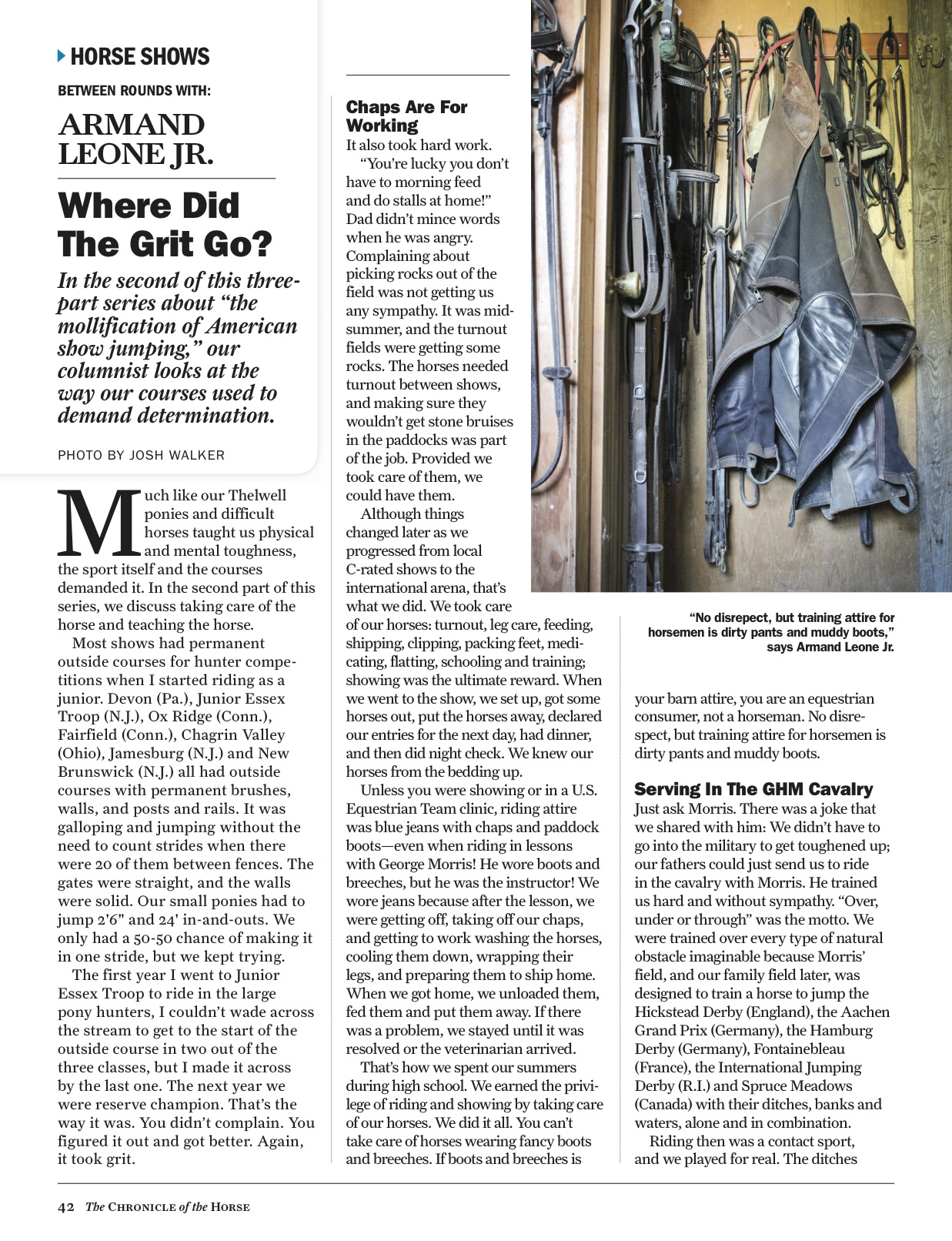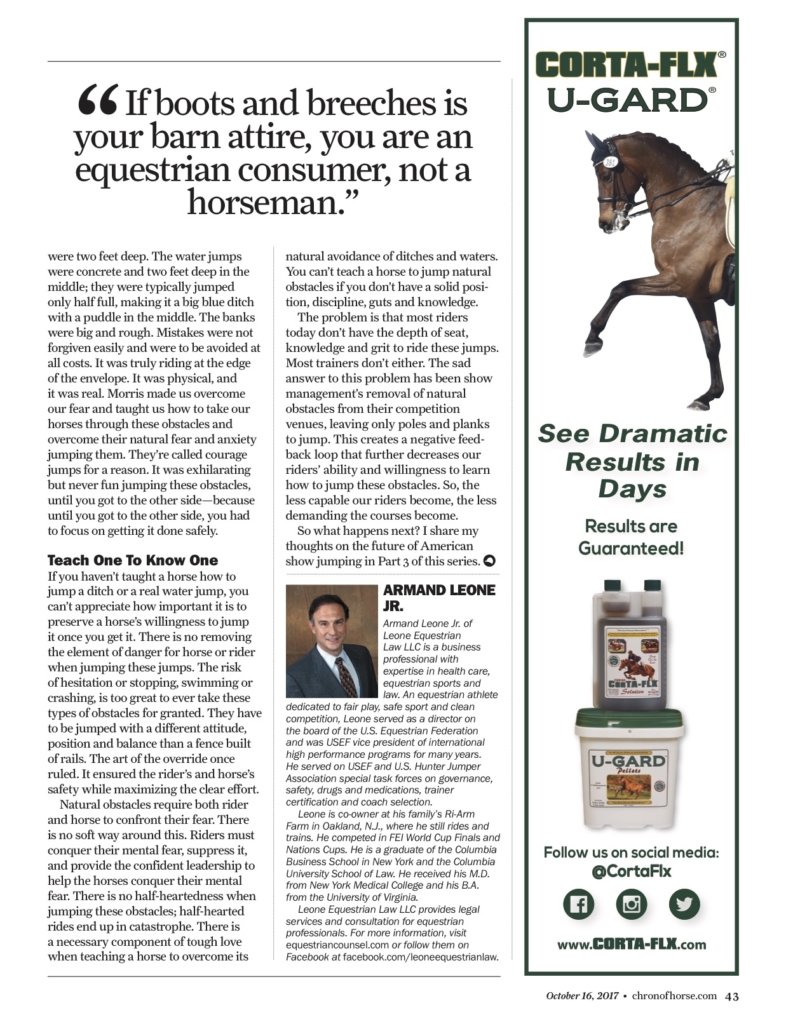Much like our Thelwell ponies and difficult horses taught us physical and mental toughness, the sport itself and the courses demanded it. In the second part of this series, we discuss taking care of the horse and teaching the horse.
Most shows had permanent outside courses for hunter competitions when I started riding as a junior. Devon (Pa.), Junior Essex Troop (N.J.), Ox Ridge (Conn.), Fairfield (Conn.), Chagrin Valley (Ohio), Jamesburg (N.J.) and New Brunswick (N.J.) all had outside courses with permanent brushes, walls, and posts and rails. It was galloping and jumping without the need to count strides when there were 20 of them between fences. The gates were straight, and the walls were solid. Our small ponies had to jump 2’6″ and 24′ in-and-outs. We only had a 50-50 chance of making it in one stride, but we kept trying.
The first year I went to Junior Essex Troop to ride in the large pony hunters, I couldn’t wade across the stream to get to the start of the outside course in two out of the three classes, but I made it across by the last one. The next year we were reserve champion. That’s the way it was. You didn’t complain. You figured it out and got better. Again, it took grit.
It also took hard work. “You’re lucky you don’t have to morning feed and do stalls at home!” Dad didn’t mince words when he was angry. Complaining about picking rocks out of the field was not getting us any sympathy. It was mid- summer, and the turnout fields were getting some rocks. The horses needed turnout between shows, and making sure they wouldn’t get stone bruises in the paddocks was part of the job. Provided we took care of them, we could have them. Read more from the October 16 issue of the Chronicle of the Horse in the full article text below, and read part one of this three part series, here.


